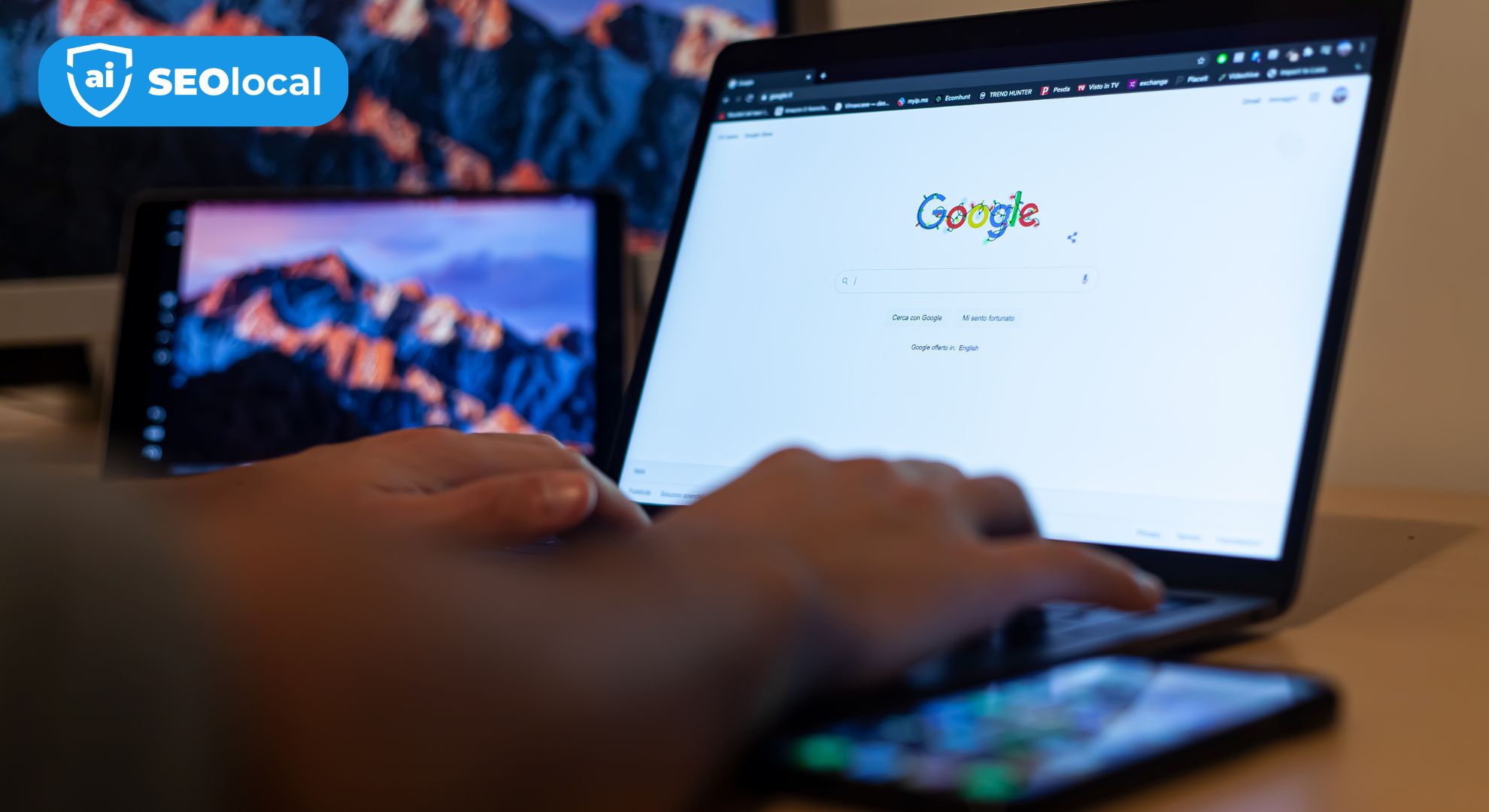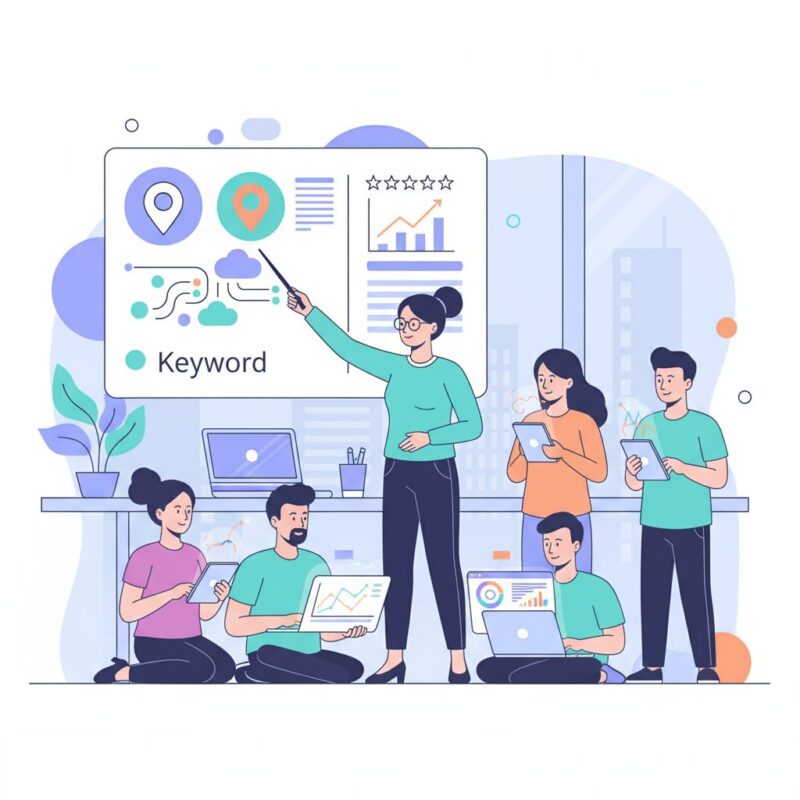- Advanced Local SEO Strategies
- Fundamentals of Local SEO
- Google Business Profile (GBP) Optimization
- Local Keywords and Content Strategy
- Local Link Building
- Local Paid Advertising
- Local Search Ranking Factors
- Local SEO Best Practices
- Local SEO Tools and Analytics
- Local Social Media Marketing
- Online Reviews and Reputation Management
- Technical SEO for Local Businesses
Optimizing Google Business Profile Q&A for Higher Local Rankings

Did you know 68% of consumers who find a local business through Google search visit it within 24 hours? This urgency makes every detail in your online profile critical—including the often-overlooked Q&A section. Google’s public question-and-answer feature lets customers crowdsource information directly on your business listing, creating a dynamic resource for potential buyers.
When someone searches for your services, your Google Business Profile Q&A appears prominently in Maps and local results. These questions and answers act as a 24/7 virtual assistant, addressing concerns like pricing, availability, or unique offerings. Ignoring this feature risks letting misinformation spread or leaving valuable engagement opportunities untouched.
Active participation in your Q&A section builds trust and improves local search performance. Customers increasingly rely on these interactions to make decisions—73% say detailed business information boosts their confidence to contact a company. By optimizing responses, you control the narrative while signaling to Google that your listing provides reliable, up-to-date details.
Key Takeaways
- Google Business Profile Q&A directly impacts local search visibility and customer actions
- Unanswered questions create missed opportunities for engagement and conversions
- Crowdsourced answers appear in search results and influence purchasing decisions
- Proactive management improves trust and search ranking signals
- Optimized Q&A content works as both SEO asset and customer service tool
Understanding the Google Business Profile Q&A Section
The Q&A panel on Google Maps serves as a dynamic information hub for potential customers. This interactive tool lets anyone ask or answer questions about your business, creating a crowdsourced FAQ visible across search results and maps.

Overview of the Q&A Feature on Google Maps
Users access the q&a feature directly through your business profile or Maps interface. Questions appear in two key places: the local Knowledge Panel and Google Maps listings. The system prioritizes active threads, pushing popular discussions higher in visibility.
| Interface Element | Desktop Display | Mobile Display |
|---|---|---|
| Question Visibility | Full thread shown | Collapsed initially |
| Answer Character Limit | 400 characters | 400 characters |
| Upvote Requirements | 3+ for prominence | 3+ for prominence |
How It Impacts Local Listings
Your q&a section affects search visibility through engagement signals. Google surfaces listings with active discussions more frequently in local results. To trigger native question displays in Knowledge Panels, you need:
- Minimum 3 user-submitted questions
- At least one question with 4+ upvotes
- Responses containing relevant keywords
Even empty q&a sections influence user behavior. The “be the first to ask” prompt encourages interaction, creating opportunities to address customer concerns preemptively.
Importance of Q&A for Local SEO
Your Google Business Profile’s Q&A isn’t just a customer service tool—it’s a search visibility engine. When people interact with this feature, they generate fresh content that search algorithms analyze for relevance and user intent. This dual-purpose resource shapes perceptions while boosting your local rankings.
Impact on Customer Engagement and Trust
Quick, helpful answers turn curious searchers into confident buyers. Studies show businesses responding within 24 hours see 35% higher click-through rates. Each response demonstrates your expertise and accessibility, building credibility that converts browsers into visitors.
User-generated questions reveal what matters most to your audience. Addressing these concerns publicly reduces repeat inquiries and positions your brand as transparent. Over time, this creates a knowledge base that works for you 24/7.
Role in Search Visibility
Search engines prioritize listings with active Q&A sections. Fresh interactions signal your business is relevant and engaged. Google’s algorithms particularly value:
- Keyword-rich answers matching local search queries
- Frequent updates showing current operations
- High engagement rates (clicks, upvotes)
This content also appears in featured snippets and map results. By optimizing responses with location-specific phrases, you capture more visibility for “near me” searches. The result? Your profile becomes a magnet for both customers and search crawlers.
GBP Q&A Management Strategies
Scaling your online presence across multiple locations requires precision. Each business profile operates independently, with unique customer interactions demanding tailored responses. Let’s explore methods to maintain quality while handling high query volumes.

Centralized Control Meets Local Relevance
Multi-location operations face a critical challenge: ensuring brand consistency while addressing location-specific details. Consider these approaches:
- Create response templates for common questions (hours, services)
- Train local teams to add neighborhood-specific context
- Establish approval workflows for sensitive topics
| Single Location | Multi-Location | Solution |
|---|---|---|
| Manual monitoring | Automated alerts | Centralized dashboard |
| Direct responses | Regional adaptations | Template customization |
| Weekly checks | Real-time updates | Dedicated response team |
Boosting Search Performance Systematically
Regular Q&A maintenance strengthens local SEO. Search algorithms favor profiles with:
- Frequent updates showing active engagement
- Geo-targeted keywords in answers
- High user interaction rates
Schedule monthly audits to remove outdated information. Integrate this process with your broader SEO strategy by tracking which answers generate the most profile visits and conversions.
Best Practices for Answering Customer Questions
Crafting precise answers boosts your visibility and credibility simultaneously. Your responses shape customer decisions while telling search engines your business stays engaged. Follow these methods to turn queries into conversion opportunities.
Timely and Accurate Responses
Speed matters. Answering questions within 24 hours increases conversion likelihood by 41%. Start with common inquiries:
- Operating hours
- Service areas
- Payment options
Use templates to maintain consistency, but personalize replies with specific details. For example, “Our downtown location offers validated parking” beats a generic “Yes, we have parking.”
Maintaining Evergreen Information
Update answers quarterly or after major changes. A 2023 study found 63% of customers distrust listings with conflicting details. Create a maintenance schedule:
| Update Frequency | Checklist Item | Impact |
|---|---|---|
| Monthly | Holiday hours | Avoids missed appointments |
| Quarterly | Service offerings | Prevents outdated claims |
| Annually | Staff qualifications | Maintains trust |
Phrase updates naturally. Instead of “We no longer offer X,” try “We’ve shifted focus to Y based on customer feedback.” This keeps information current without sounding defensive.
Enhancing Customer Trust Through Effective Q&A
Your business profile’s question section becomes a credibility checkpoint for potential customers. Official responses marked with your business name and “(owner)” tag instantly signal authority, separating your expertise from random user comments.

Building Credibility with Official Answers
Verified answers appear first in the section, highlighted with your brand identity. This visual distinction helps customers recognize reliable information. For example, detailed responses about safety protocols or service guarantees show you prioritize transparency.
Use industry-specific terminology when addressing technical questions. A bakery explaining “sourdough fermentation times” or a mechanic detailing “OBD-II diagnostics” demonstrates specialized knowledge. These answers become reference points for future customers researching your services.
Managing User-Generated Content
Monitor incoming answers daily. Flag responses containing outdated pricing or incorrect policies using Google’s “Report” feature. For sensitive issues like negative experiences, respond publicly with solutions rather than deleting comments.
Encourage satisfied customers to upvote helpful answers. Three upvotes make a response more visible, letting community input reinforce your expertise. Balance crowd contributions with official updates to maintain accuracy without silencing genuine feedback.
Optimizing Keyword Usage in Your Q&A Answers
Your answers to customer questions do more than provide information—they’re hidden opportunities to boost local search visibility. When you align responses with what people actually search for, you create content that works double duty: informing customers and satisfying algorithms.
Incorporating Relevant Search Phrases Naturally
Start by identifying phrases customers use when researching your services. Tools like Google’s autocomplete or “People also ask” sections reveal common queries. For example, a bakery might notice searches for “gluten-free birthday cakes near me” and craft answers that include both the specialty and location.
Focus on intent over keyword count. A response like “Our downtown location offers vegan options daily” naturally includes “vegan options” and “downtown location” without sounding forced. This approach keeps answers helpful while improving relevance for local search algorithms.
Track which phrases drive traffic using Google Business Profile insights. Update answers quarterly to reflect seasonal trends or new services. A hardware store could shift from “snow shovel availability” in winter to “grill assembly services” in summer, maintaining fresh content that matches current searches.
Avoid repeating terms unnaturally. Instead of saying “best local search results” multiple times, vary phrasing: “top-rated in [City]” or “most searched service in [Neighborhood].” This maintains readability while covering related keywords.
Integrating Third-Party Tools for Streamlined Q&A Management
Scaling Q&A efforts across multiple locations demands more than manual effort—it requires smart automation. Specialized platforms help businesses maintain consistent responses while handling high volumes of customer interactions. These solutions become critical when managing 100+ business profiles, where Google’s native tools often fall short.
Centralized Control Through API Solutions
API-driven platforms offer enterprise-level capabilities for multi-location operations. They provide real-time alerts when new questions appear across all linked google business profiles. Teams can assign responses, edit answers, and pre-load frequently asked questions—all from a single dashboard.
Consider these key features when evaluating tools:
- Automated notifications for immediate response opportunities
- Customizable approval workflows for brand consistency
- Historical data tracking to identify recurring concerns
| Manual Approach | Automated Solution | Efficiency Gain |
|---|---|---|
| Daily profile checks | Instant alerts | 83% faster response |
| Spreadsheet templates | Pre-approved answers | 70% time reduction |
| Individual logins | Team permissions | Centralized control |
For businesses with numerous profiles, these tools prevent missed questions and ensure brand voice consistency. They integrate with existing CRMs and help desks, creating seamless workflows. When choosing a platform, prioritize security certifications and Google API compliance to protect sensitive data.
Implementation requires careful planning. Start with a pilot location to test response templates and notification settings. Gradually expand while monitoring answer quality through random audits. This phased approach maintains service standards while scaling operations effectively.
Conclusion
Your business profile’s Q&A section isn’t just a feature—it’s a living dialogue shaping customer decisions. Every answer builds credibility while feeding search algorithms fresh, location-specific content. For multi-location businesses, this becomes your frontline for maintaining consistent messaging across neighborhoods.
Regular updates transform basic FAQs into powerful marketing tools. Quick responses with local keywords improve visibility for “near me” searches. Detailed answers about services or hours reduce customer doubts before they contact you.
The real magic happens when community input meets official updates. Encourage satisfied clients to upvote helpful answers while monitoring for outdated details. This balance keeps your profile accurate without losing authentic customer voices.
Consistent Q&A maintenance drives measurable results—higher search rankings, increased foot traffic, and stronger brand trust. Start today by auditing your existing answers and scheduling weekly check-ins. Your future customers are asking questions right now.
FAQ
How does the Google Business Profile Q&A section impact local rankings?
The Q&A feature helps improve visibility in local search results by providing fresh, relevant content. It signals to Google that your profile is active and addresses customer needs, which can boost your rankings.
Why should businesses prioritize answering customer questions quickly?
Timely responses show customers you value their input and improve engagement. Quick answers also prevent misinformation from spreading in the Q&A section, ensuring accurate details about your services.
Can third-party tools help manage Q&A for multiple locations?
Yes. Platforms like EmbedSocial streamline Q&A management across multiple listings. They allow teams to monitor, respond, and update information efficiently, saving time while maintaining consistency.
How do keywords in Q&A answers affect search visibility?
Naturally incorporating local search phrases (e.g., “best coffee shop in Austin”) helps Google understand your relevance to specific queries. Avoid stuffing—focus on conversational language that matches what customers ask.
What’s the best way to handle incorrect answers from users?
Politely correct misinformation with factual replies. For example, if someone claims you close at 8 PM but your hours are 9 PM, respond: “We’re open until 9 PM daily! Feel free to visit us later.”
Should businesses add their own questions to the Q&A section?
Yes. Proactively post FAQs like “Do you offer gluten-free options?” with detailed answers. This preempts common customer concerns and reduces repetitive inquiries over time.














